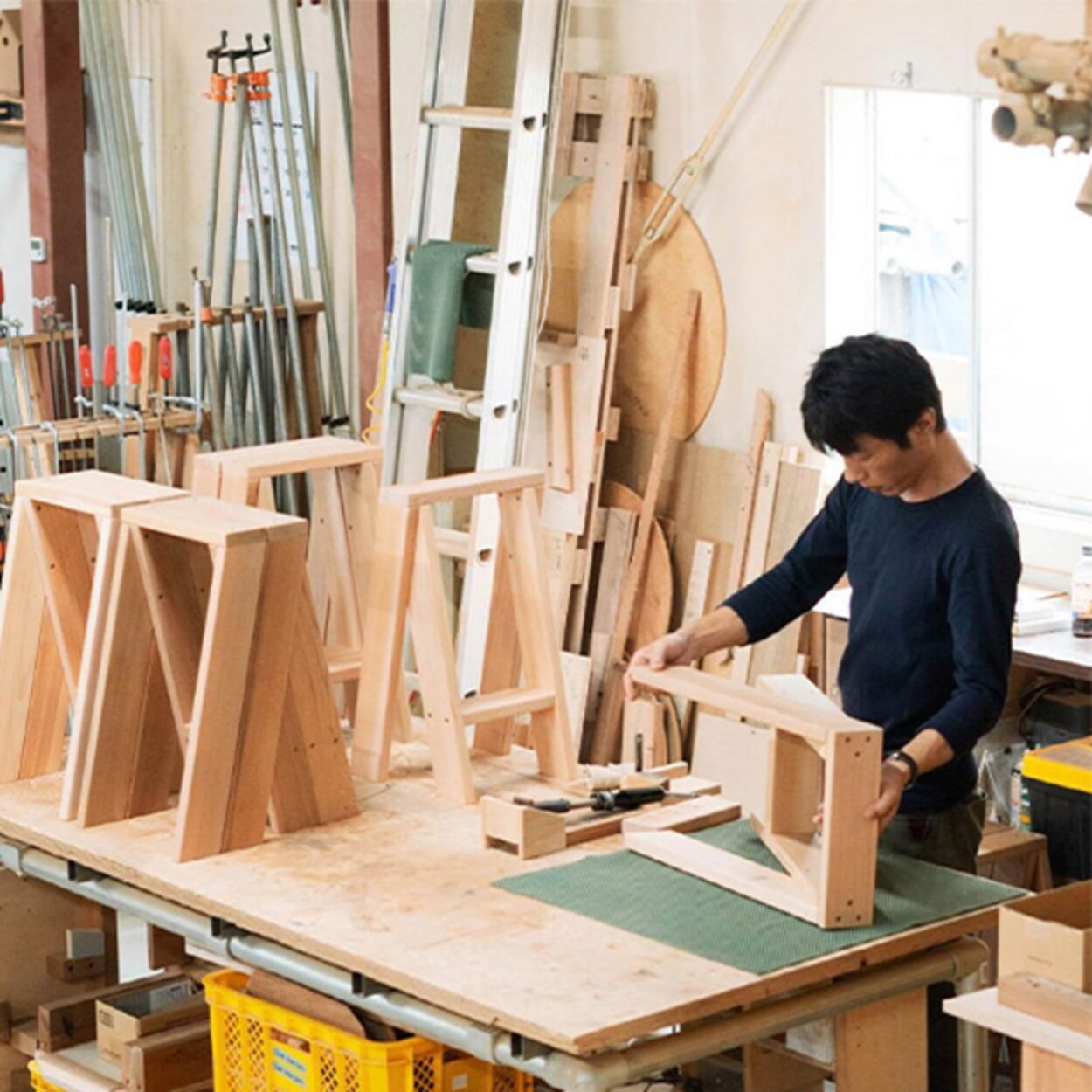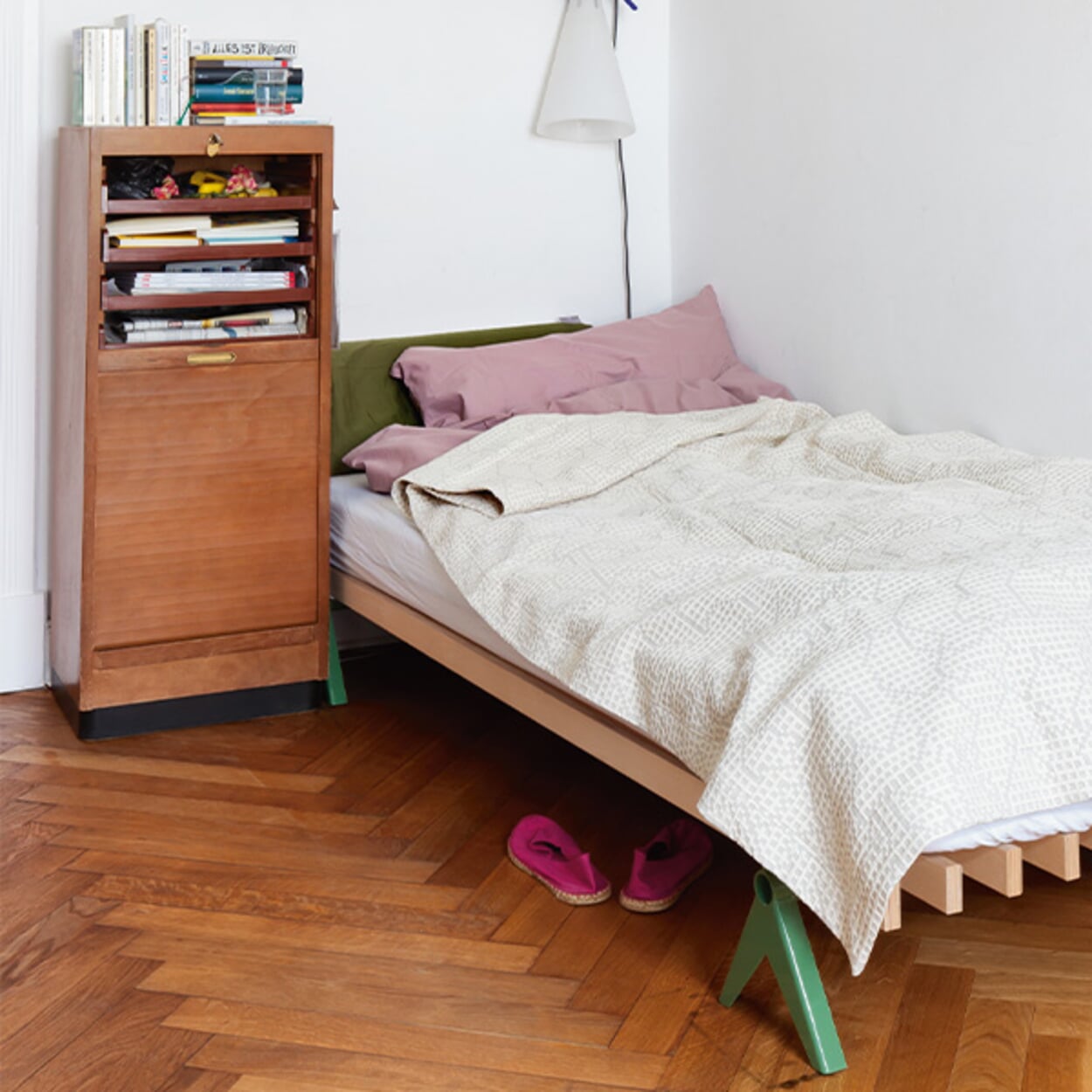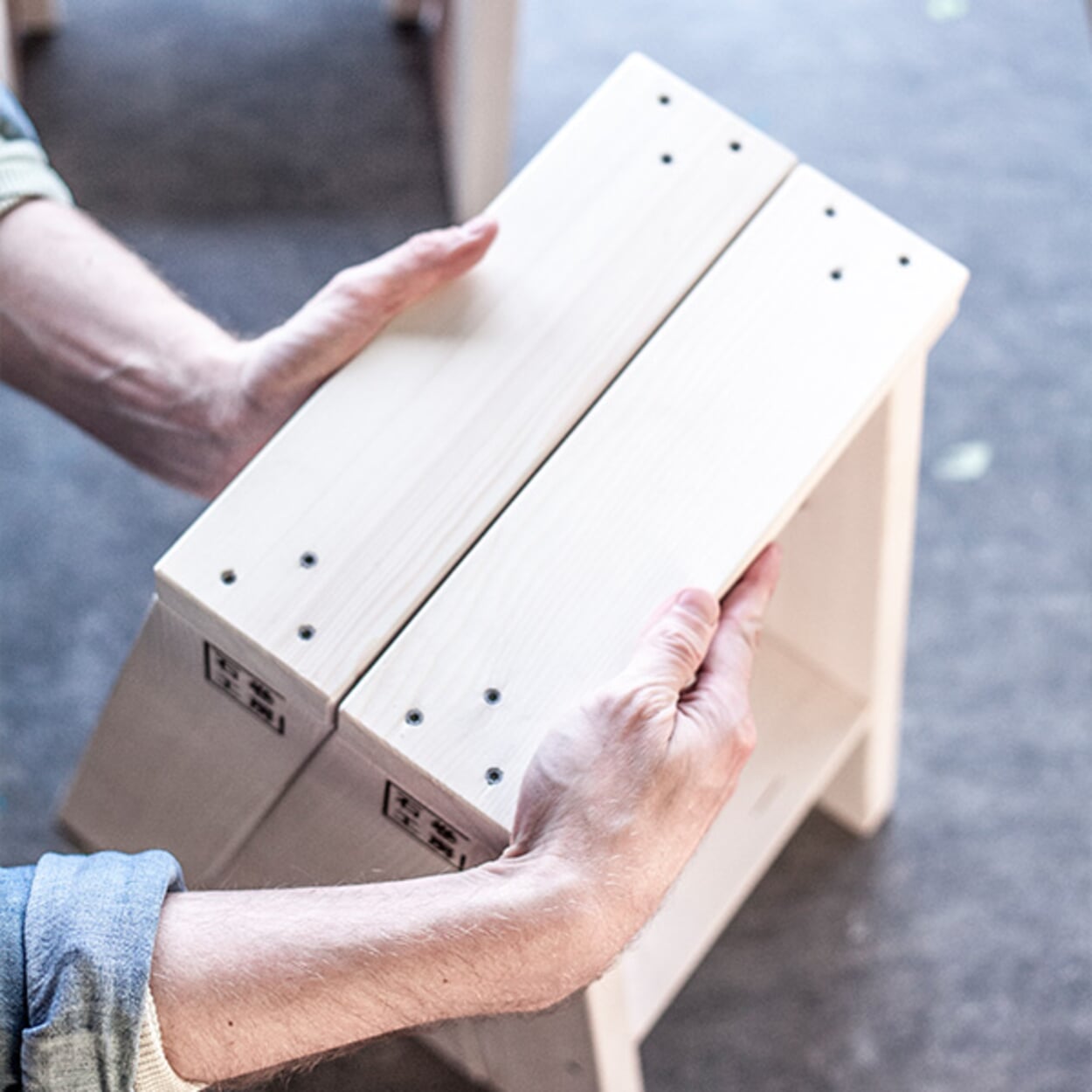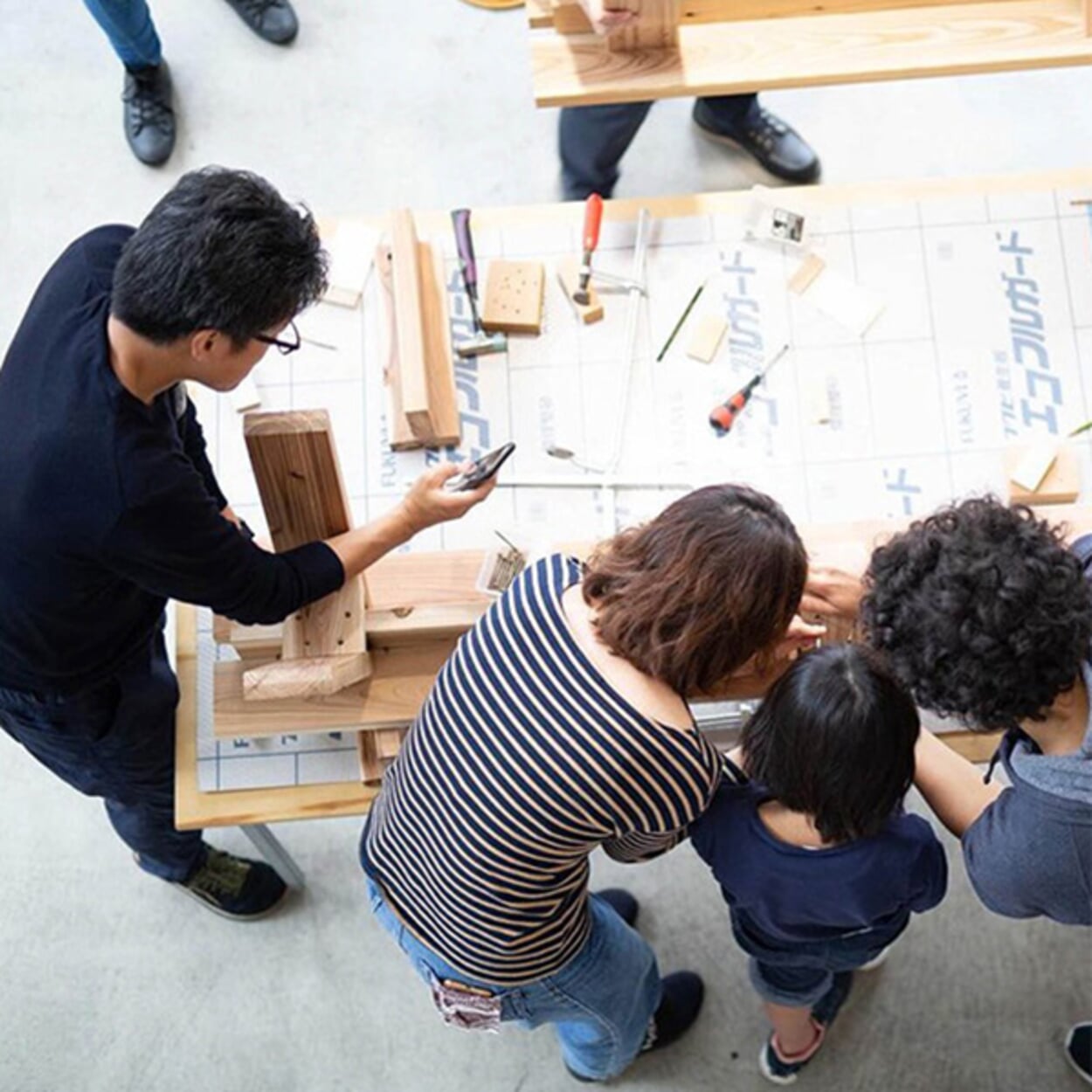Topic
DESIGN AS A NEW BEGINNING
Designed in Japan, made in Germany Building furniture yourself and making the world a little better is what designers and thinkers Enzo Mari and Victor Papanek were all about. Japanese architect Keiji Ashizawa took the idea a little further: when an earthquake destroyed parts of Japan eleven years ago, he helped residents to rebuild their cities with home-made furniture. The designs of the "Ishinomaki Lab" are now also made in Germany - by hand from local wood. Text: Florian Siebeck
A few days after a magnitude 9.1 earthquake triggered a tidal wave that devastated north-eastern Japan, Tokyo-based architect Keiji Ashizawa traveled to the coastal town of Ishinomaki. He was there to inspect the damage to a restaurant he had designed for a client a year earlier. "Everything was missing," says Ashizawa. "Some people only had tatami mats for doors." Because carpenters were rare, many people helped themselves. When Ashizawa met a store owner who was repairing his shop, he had an idea. He fitted out an empty store with some tools and obtained large planks of so-called Western Red Cedar, a light but robust type of wood. "I realized that people needed to make, repair and modify things themselves in order to rebuild their town." Creating something with their own hands would also help them deal with the trauma they were going through. It wasn't long before the first people came to the Ishinomaki Lab to learn how to build furniture. Ashizawa developed elegant, practical designs that could be made from standard pieces of wood with simple tools and little experience. Stools and benches, for example, which could be quickly integrated into communal spaces. The initiative was supported by the American furniture manufacturer Herman Miller.
Over time, more and more established architects and designers became involved, adapting their designs to the existing materials, tools and production processes - while at the same time making sure to leave as little waste as possible during production. Shelves, chairs, tables, gym benches or birdbaths, where the focus was on robustness and stability. Ten years later, the self-help project has become a respected furniture brand. Although the products are no longer quite as raw as in the early days, they have remained true to the basic design philosophy and material language: the designs are functional, but well thought out. Simple, but charming. Low-tech instead of high-tech. The pieces fit just as well in private homes as they do in public spaces.
The designs are still produced in Ishinomaki today. But not only there: with the help of the "Made in Local" initiative, the "Ishinomaki Lab" shares its expertise with partners all over the world. A movement that promotes local craftsmanship. For example, the AA Stool, designed by Torafu Architects, is manufactured in Germany by HLZFR (see box). With its exposed screws, natural wood and handcrafted look, the stool, which was named after the shape of its profile, shows how beautifully simple things can be.
The spirit of do-it-yourself - "monozukuri" in Japanese - is also exported all over the world by the "Ishinomaki Lab". In addition to regular DIY workshops for woodworking and furniture making in Ishinomaki and Tokyo, there have been similar projects in Manila, Singapore, Berlin, London, Guadalajara, Busan, Copenhagen and Detroit. "People didn't just make things in the workshops," says Ashizawa. "They also learned that design can solve problems." The "Ishinomaki Lab" not only shows what a profound influence craftsmanship can have on our lives - but also how design can be rethought in an environmentally and community-friendly way.
The Ishinomaki Lab furniture is manufactured exclusively for Germany and Austria by HLZFR (pronounced: Holzfreunde) in Berlin, and HLZFR also sells it to other EU countries and Switzerland, including the AA Stool by Torafu Architects. The construction of the stool is the same as in Japan (screwed solid wood), but wood from Bavarian forests is used: "Even though it is slightly heavier and more robust, Douglas fir comes closest to the original," says HLZFR founder Torben Schomaker. The wood is treated with a soap finish and develops a beautiful patina over time. "The AA Stool exudes a certain rawness and coarseness, but is also very flexible. That's what makes it so interesting for me." This is because the AA Stool is also suitable for outdoor use and can be exposed to the elements from time to time. The almost indestructible stool comes in different sizes and is normally used as a pair, as a stool or side table. With a top, the AA Stool can also be converted into a table.
This article appeared in our new catalog. Order now for free and read more stories from the world of Magazin.













